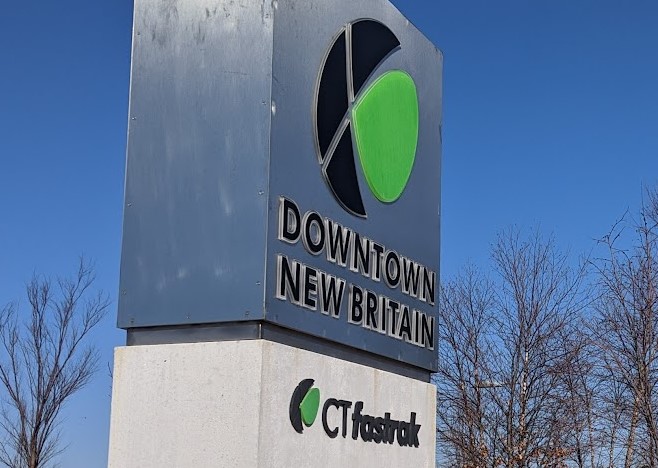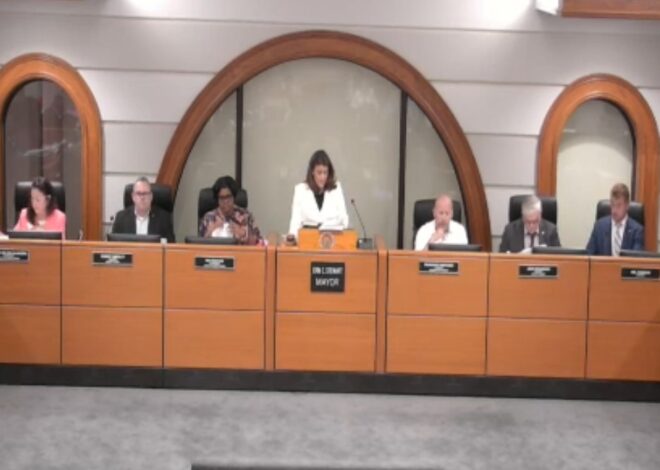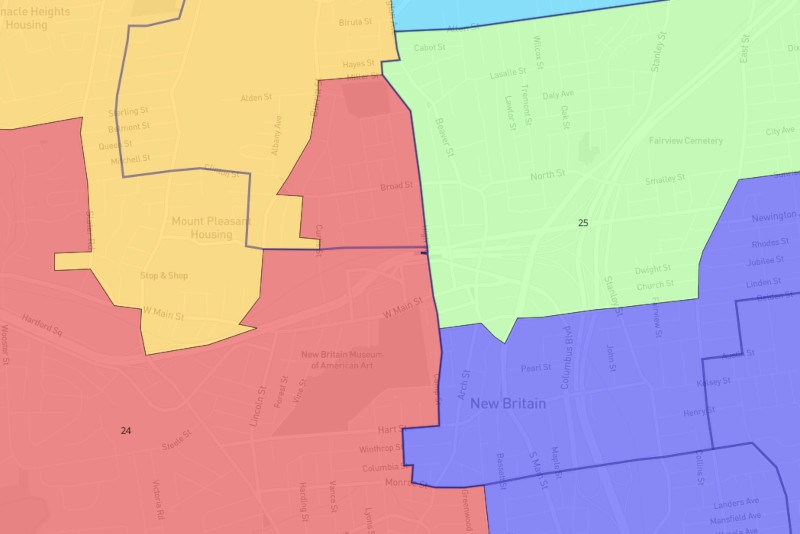
Modest Changes Could Make Commission’s Council District Plan Reflect City’s Diversity
With only modest changes, the city Redistricting Commission’s plan for City Council districts could be changed to represent the city’s diversity.
On March 8, 2022, the Redistricting Commission, responsible for proposing a map of five Council districts for the next ten years, tentatively chose a plan for City Council districts that appears to not represent the city’s diversity.
Like with Congressional, State Senate and State House of Representatives districts, the five districts on the New Britain City Council, commonly called “wards”, are reapportioned every ten years, following the national decennial census. Two thirds of New Britain’s fifteen member Council are elected, two each, from the five wards. Another five Council members are elected at-large. The reapportionment, also called redistricting, is done to ensure that each district represents approximately the same number of people.
The Council districting map tentatively chosen by the Commission, called the Commission’s “Map 2”, “Compromise Map 2” or the “Gostin Plan” is to be put up for a hearing on March 16th.
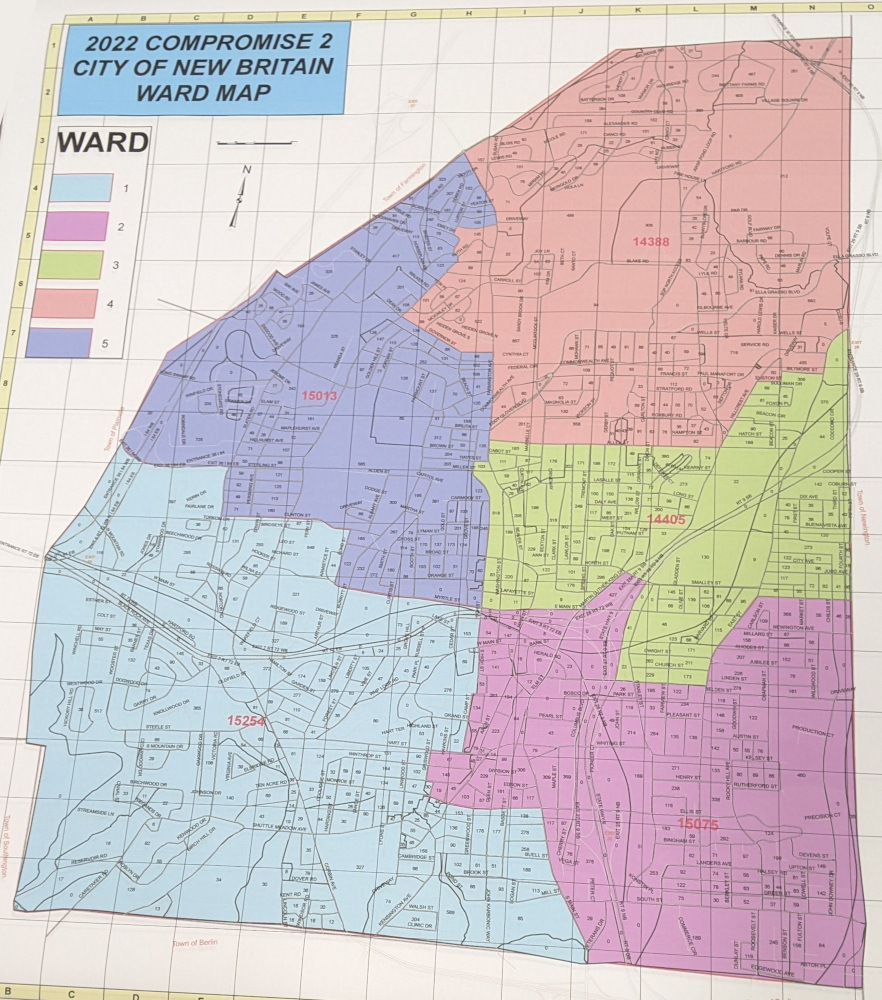
The Commission also decided to take public comment on a second map, favored by three of its six members, called the Commission’s “Map 1”, “Compromise Map 1” or the “Malinowski Plan”. However, as the New Britain Progressive has reported, neither of the Commission’s two proposals appear likely to provide districts allowing communities of color the clear decisive vote in the three out of the five, 60%, of the districts that is commensurate with their population in the city.
According to data from the United States Census Bureau, the percentages of communities of color (including Latinos, African Americans, Asian Americans and others) among New Britain’s population has grown from 52% in the 2010 census to nearly 63% in the 2020 census.
That increase to 60% of the population means that 60% of the city’s five Council districts could be solid majorities of communities of color. An analysis done by New Britain Progressive volunteer efforts, using the web service, Dave’s Redistricting, showed that is possible.
While the data from Dave’s Redistricting appears to show that 57.47% of New Britain’s voting age population are members of communities of color, under the Redistricting Commission’s tentatively chosen “Gostin” district plan, only two of the city’s five Council districts would have voting age populations of greater than 57.47% communities of color — Ward 2 and Ward 3.
While the Commission’s tentative proposal would appear to have four districts with a majority voting age population of communities of color, two of those four districts would be nearly 50% white voting age population. If white voter participation were higher in city elections in those districts, that would translate into 60% of the voting power in ward Council elections being controlled by white voters — the opposite of the fact that the population of the city is greater than 60% communities of color.
But, with only minor changes, the Commission’s tentative map could be made far more likely to produce representation consistent with the city’s population, as shown in a new analysis, “Example 4”, done by New Britain Progressive volunteer efforts, again using Dave’s Redistricting.
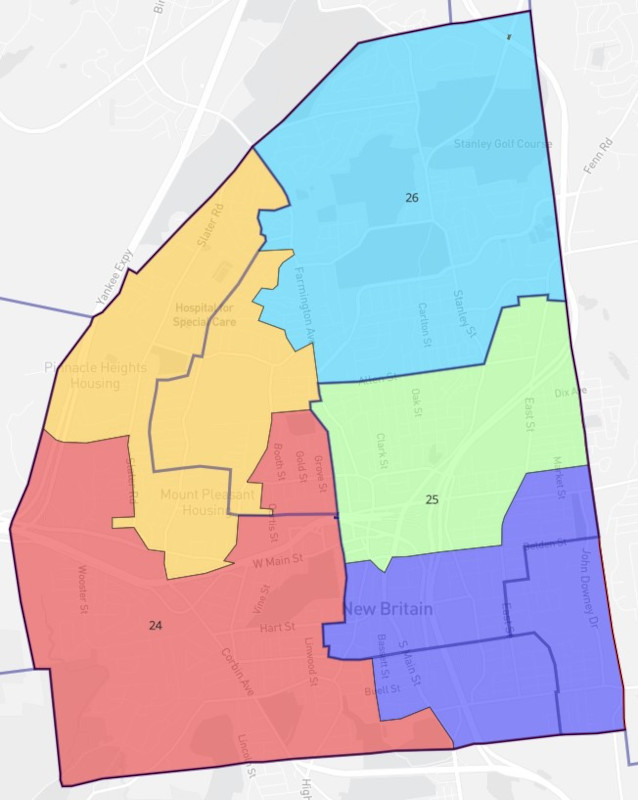
Where the Commission’s tentative map, the “Gostin” plan, would appear to have two Council wards with voting age populations of greater than 57.47% people of color, there could be three with the modest changes in the map to create the “Gostin” alternate, Example 4.
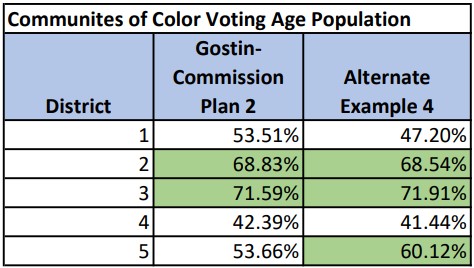
Like with the Gostin plan, in the “Alternate Example 4”, Wards 2 and 3 would appear to have potentially decisive voting age populations of people of color. However, unlike with the Gostin plan, the Example 4 map would also appear to increase the percent of people of color in Ward 5 to over 60%, resulting in a third district with a potentially decisive voting age population of communities of color.

The major changes between the two maps would include switching the Mount Pleasant neighborhood and nearby areas from Ward 1, where they are proposed to be under the Gostin Plan, to Ward 5. Most of the Broad Street neighborhood would be changed from Ward 5 to Ward 1. Other changes would also be made in the Farmingdale neighborhood, the Willow Brook neighborhood and downtown area.
The Redistricting Commission’s responsibility is to report a draft map of Council districts for the Council to review and approve. If either the Commission or Council miss deadlines provided for in the City Charter, the mayor then proposes a three-person commission, who then make the final decision on the district lines.
The Charter requires that each of the five Council wards,
(1) shall be of substantially equal population and otherwise consistent with all federal and state constitutional and statutory requirements; (2) to the extent possible consistent with the preceding, shall maintain the integrity of recognized neighborhood planning areas; (3) shall be geographically contiguous and compact; and (4) to the extent possible consistent with the preceding, shall be consistent with existing legislative districts.
“Federal and state constitutional and statutory requirements,” have long been understood to include compliance with the federal Voting Rights Act.
Once approved, the new City Council ward boundaries will remain in effect for ten years. Those districts will be in place for the 2023, 2025, 2027, 2029 and 2031 city elections.


